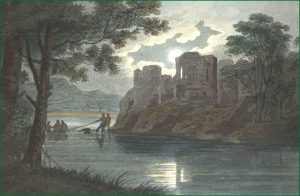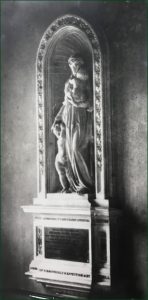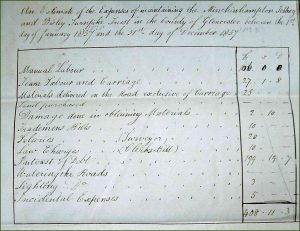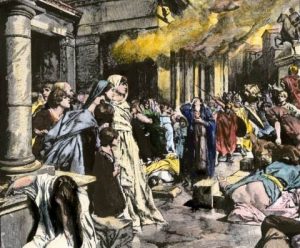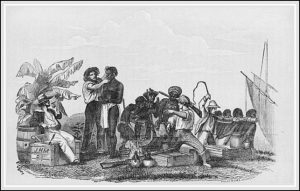Wednesday 16 November 2022
Making a living on the River Severn
Fruit-growing, cider-making, osiers, basket-making, fishing, shipping, ship-building, smuggling and piracy… all have played a part of life on the River Severn over the years. Focussing specifically on the parishes of Elmore and Minsterworth, Dr Simon Draper set out the varying trades. Originally reclaimed from marshland by the Romans, we heard about wiers spanning across the river to trap fish in the 1500’s, cider presses powered by donkeys, fishermen who became wealthy on the proceeds of salmon, and even shipbuilding at Elmore Back in the 18th Century. Today the living comes mostly from elvers and tourism linked to the Severn Bore. A fascinating evening.
Wednesday 19 October 2022
The meeting began with the CPLHG AGM. A report of the meeting (with reports from the Chair and Treasurer) is here CPLHG AGM October 2022.
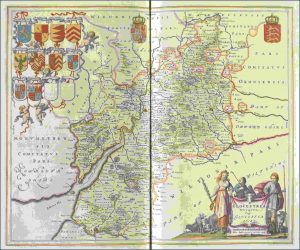 A Gloucestershire Odyssey, the history of the formation of the county
A Gloucestershire Odyssey, the history of the formation of the county
Tony Condor gave an overview of the creation of Gloucestershire from around 920 AD, through the addition of areas such as Winchcombe and Tiddenham (FoD), to the departure of Bristol in 1373, and in due course the creation of South Gloucestershire. He outlined the geology and geography of the county along with points of archaeological interest such as the Long Stones at Minchinhampton and Staunton. The folklore and tradition of the county were mentioned (from the Randwick Wap to Pig Face Day at Avening), along with some legends.
Wednesday 21 September 2022
Christ Church, Chalford
John Dawson gave us an interesting chronicle of the building of a church in Chalford, beginning in 1725. It began as a chapel of ease and the authorities in Gloucester would not support a vicar. The original building had a simple rectangular shape with an apse but later the nave was extended and a chancel added. In 1841 permission was granted for a graveyard and the church was consecrated into the Church of England and named ‘Christ Church’. The tower was added 16 years later, with further improvements to the building as money became available. John rounded off his part by talking about the six steel bells and clock.
Camilla Boon concentrated on the Arts and Crafts furnishings within the church, beginning with the background of the key men involved – Peter Waals (buried in the churchyard), William Simmonds, Owen Scrubey and Norman Bucknell. Revd Walter Carder (vicar from 1924-1952) was the driving force for the improvements, along with architect Norman Jewson. The beautifully carved screens, pulpit, the delightful lectern and font were all described. Camilla finished with showing us the fine stained glass windows designed by local Edward Payne and the war memorial on the north wall.
Wednesday 20th July 2022
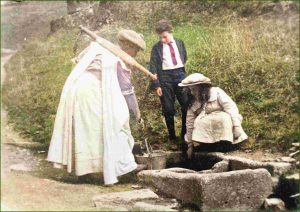 Guided walk round Oakridge Lynch
Guided walk round Oakridge Lynch
We began our walking tour at the school, with John Loosley giving us a brief history of the village of Oakridge Lynch – copies from the 1824 Bryant map and the 1842 Tithe map showed how Bisley Common was increasingly encroached by farmworker’s cottages. In the churchyard we were then shown a number of graves of Oakridge people of note followed by the terrace of The Old Vicarage. Next, John’s reading from an interview about one of the postmistresses brought alive The Old Post Office. The history of the nearby war memorial was most poignant. We passed a wee cottage that is now listed – no longer inhabited though as it is so small. John pointed out where the Silk Mill used to be and showed us some pictures of it. Next stop was the old Methodist Chapel followed by information about various cottages and a former shop as we returned to the school. Finally, John gave us a few words about another important Oakridge man – Charles Mason, one of the surveyors of America’s Mason-Dixon line. We had been given a most informative and enjoyable tour.
Wednesday 15th June 2022
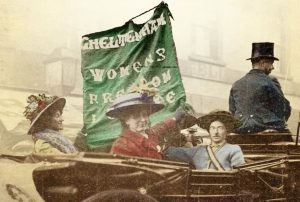
Militant Gloucestershire Women, their fight for the vote
Sue Jones, who recently published a book on this topic, took us through her research, highlighting where Chalford and Stroud were specifically identified in events (both Suffragist – led by Millicent Fawcett – and Suffragette – led by Emmiline Pankhurst). There were 31 signatories from Stroud on the 1866 petition to parliament, two meetings were held in Chalford at the National School, and around 50 women from the Stroud area participated in the boycott of the 1911 Census. A Suffragist branch was set up in Stroud, meeting at the Holloway Institute, and a Suffragette meeting was held at the Sub rooms (due to be addressed by Emmiline Pankhurst but replaced by Lady Constance Lytton). However involvement was limited (compared say to Cheltenham), possibly due to a lack of middle class women with the resources to lead. Sue also highlighted the life and work of Marion Isabel Seymour, who in later life came to Brownshill to be cared for by the Catholic order of nuns, and is buried at St Mary of the Angels.
Wednesday 18 May 2022
Road Travel in Georgian Gloucestershire: the Turnpikes and Road Improvements
Nicholas Herbert painted a vivid picture of transport routes in the early 18th Century – primitive surfaces, often narrow in width and sometimes routed up steep gradients. Early maps show how trees formed prominent waymarks (e.g. locally ‘Foston’s Ash’). The creation of the Turnpike Trusts (from the 1720’s in Gloucestershire) ensured maintenance and improvements became the responsibility of designated gentry and tradesmen (many of whom could benefit from improved highways – as would the Clothiers in our area). Toll houses and gates, erected to ensure tolls could be levied, were dismantled in the late 18th century when responsibility passed to local authorities.
Wednesday 20 March 2022
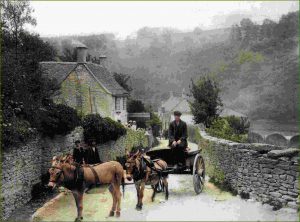
Delving into Mike Mills’ slides
Roger Carnt, Pete Drover and Camilla Boon gave a great presentation of images from Mike Mills’ collection, covering all parts of the parish and from Edwardian times until the 1980’s. A great many of these pictures had not been shown recently and those attending enjoyed trying to identify locations and people where this was not clear. Of course we missed Mike’s extensive knowledge of the area and its people.
Wednesday 16 March 2022
What happened when the Romans left
Will Parker gave a detailed account of events from the beginnings of Rome as an Empire after Caesar crossed the Rubicon in BC 49 to the creation of Hwicce, a province of Mercia embracing Gloucestershire, Worcestershire and part of Warwickshire. The various revolts that led Britannia to leave the Empire in AD 410 were followed by invasions of Angles who settled in East Anglia and Saxons who pushed South and West. The Saxons drove the Romano-Britons to Wales and Cornwall and conquered the great Roman cities of Gloucester, Cirencester and Bath. Along the way they engaged in the great battles of Mount Badon(Bath) and Deorham (Dyrham Park). Gildas the wise, the monk and chronicler, tells us that Vortigern the Great King of the Britons, was exiled in North Wales.
Wednesday 16 February 2022
Gloucestershire and the Atlantic Slave Trade
Tony Conder’s detailed research and forensic analysis of the extent of the slave trade and its permeation into the wealth of the the UK, specifically Gloucestershire, was quite staggering. Bristol being the epicentre of much of the trade, numerous local estates clearly profited from this – including Dodington Park, Prinknash House, Bowden Hall – as did countless individuals of more modest means. The developers of Gloucester Docks had hoped to link to this trade, with slave owners and sugar traders Samuel Baker and Thomas Philpott establishing warehouses (still named after them), however the slave trade was abolished shortly after completion. Tony outlined the role of abolitionists of varying faiths, notably Quakers and Baptists, including Gloucestershire based Samuel Bowly and Joseph Sturge, and also showed how abolition did not mean the end of exploitation or impoverishment of former slaves. He also pointed out that the massive debt incurred through government ‘compensation’ to slave owners (estimated to amount to 40% of the UK’s GDP) was only finally paid off in 2015.
January 19th 2022
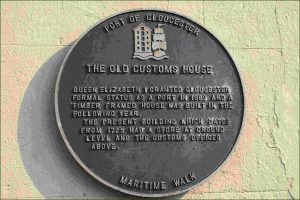
Dr Ray Wilson gave us a comprehensive tour of the history and geography of Gloucester Docks. Fully operational in 1827 and connected to the Severn via the ‘Gloucester and Berkeley Canal’ (known as the Sharpness Canal today) the docks were a hive of activity, mostly connected to the grain trade, although from the late 19th century Sharpness took over much of the trade. The fate of many of the warehouses – many of which have been restored – was outlined, and we viewed several surviving relics of the former docks: the perimeter security wall, a concrete barge, the Custom House (now Soldiers of Gloucs Museum), the dredgers, the Mariners Chapel and the replica trams (horse drawn on a line which went to Cheltenham). Well worth a visit to view in person.

